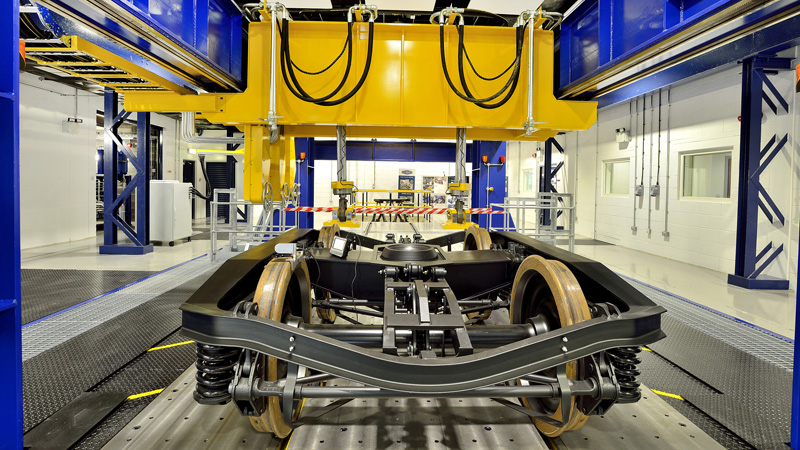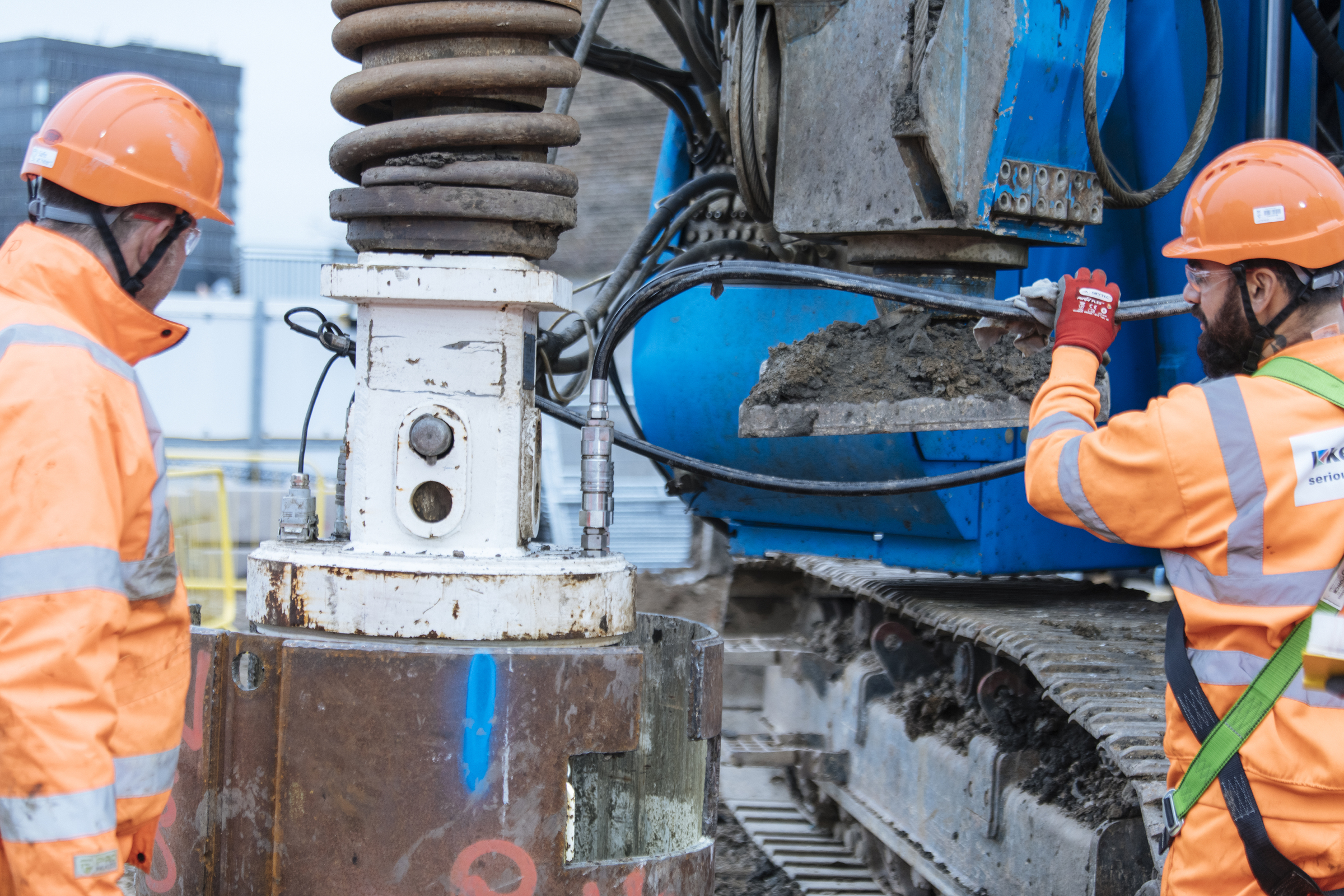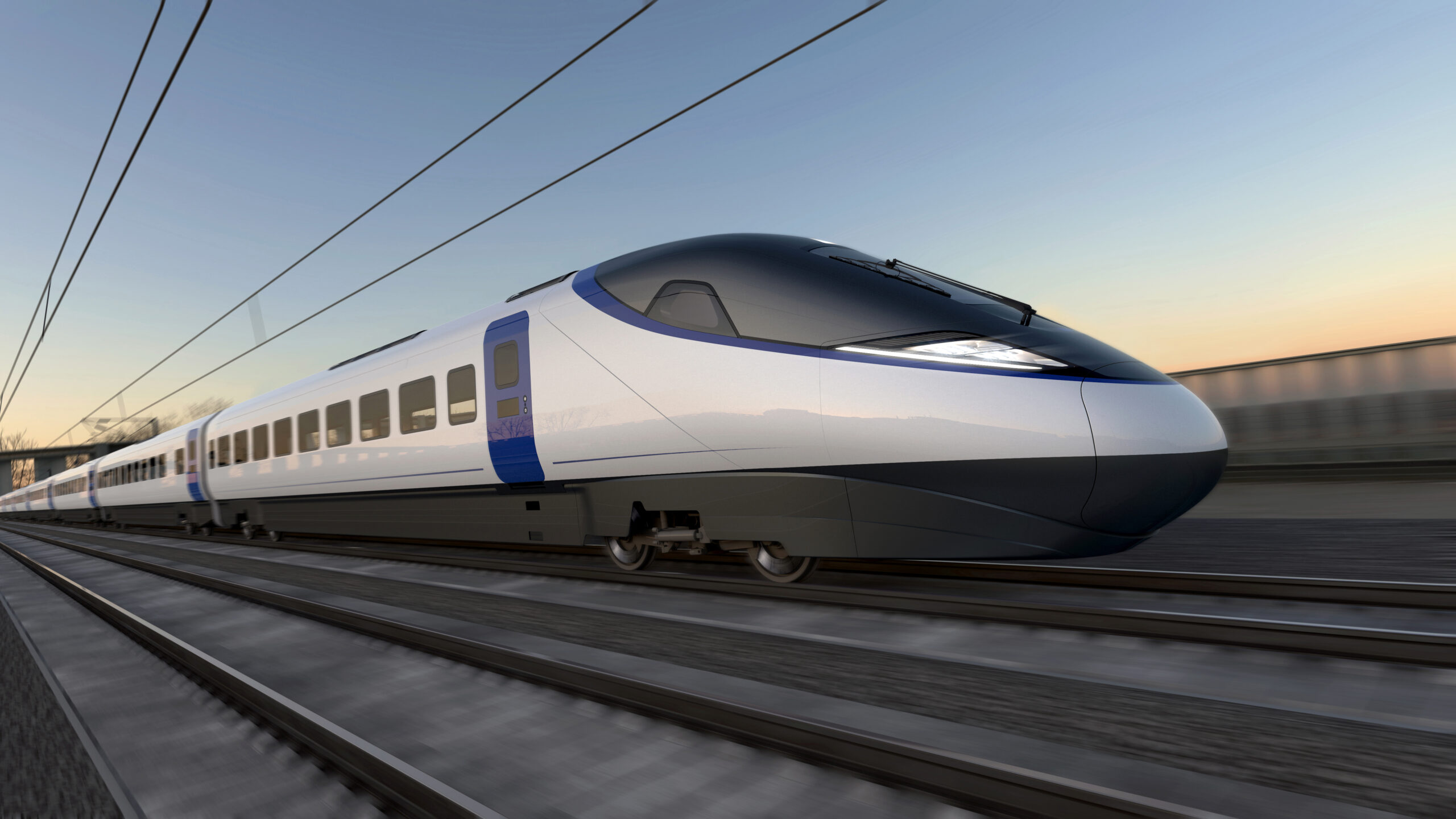This summer the University of Huddersfield’s Institute of Railway Research will launch Harold 2.0 – a full-scale bogie test rig.

This will be the only full-size rig of its kind in the UK. It will feature a motored rolling road that can recreate whole-route traction and braking duty-cycles at speeds of up to 200 kilometres per hour under a range of wheel-rail adhesion conditions.
An upgrade of the institute’s existing Harold braking, traction and energy systems test facility, Harold 2.0 was made possible by 1 million GBP (1.18m euros | 1.35m USD) of funding from the UK Rail Research and Innovation Network (UKRRIN) and is being built by engineering consultants Ricardo.
The institute’s PANTHER high-speed pantograph test rig and THOMoS high-fidelity passenger comfort/motion simulator were also funded by UKRRIN investments.
Harold 2.0 will enhance the facility’s research capabilities through the integration of a real-time train braking performance model and a fully functional AC power bogie that includes friction and regenerative brake systems and a complete traction package.
Using hardware-in-the-loop (HiL) test methods, Harold 2.0 will be able to analyse on-train systems including next-generation wheel-slide protection (WSP), dynamic brake blending control and traction components.
With provision for battery banks and fully configurable real-time models, the test rig will also be able to test new hybrid drivetrains and energy storage systems, enabling hardware and software solutions to be trialled in a controlled, realistic environment.
Professor Paul Allen, Assistant Director of the Institute of Railway Research, said:In helping realise predictable and optimised traction and braking performance, the HAROLD 2.0 test rig will contribute to delivering a safer, more reliable and higher capacity railway.
Through testing and development of hybrid vehicle concepts, it will support the railway industry in overcoming its wider decarbonisation and electrification challenges.
























